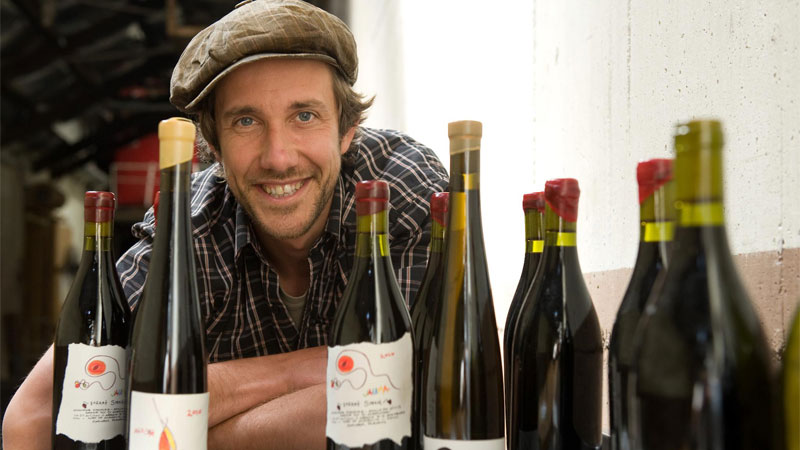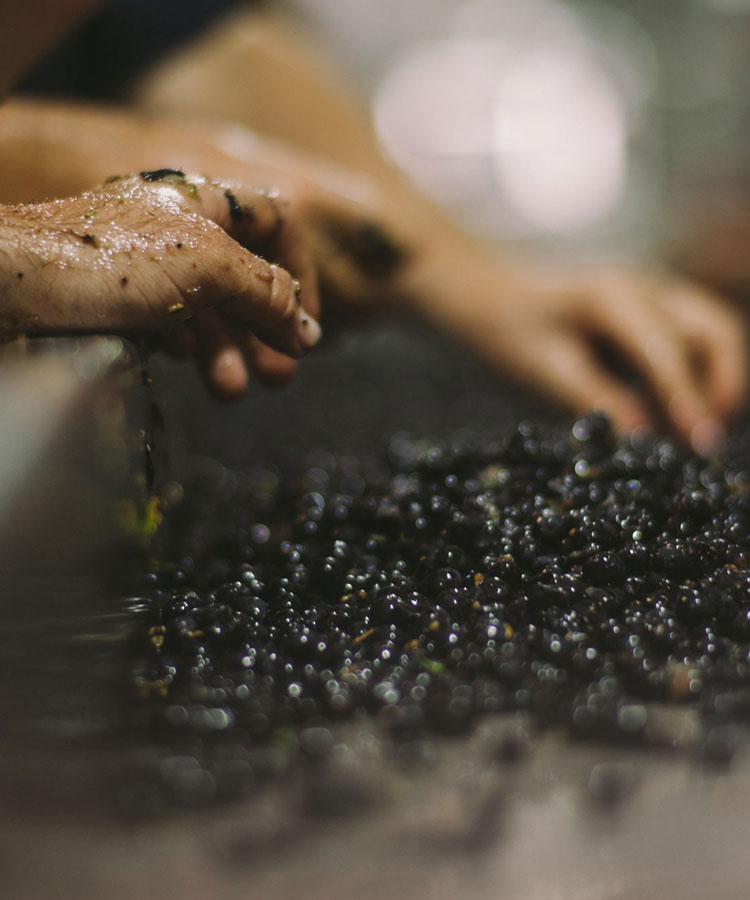
For the last decade or so, natural wine has slowly been making its way into the global conversation thanks to a group of winemakers who have bucked conventional methods for a more stripped-down and bohemian approach to viniculture. There are plenty of producers from Old World locales who have been driving this way of thinking and working, but there’s a growing movement in the New World, and nowhere is that more apparent than in Australia.
It’s important to remember that Australian wine isn’t all Yellowtail or expensive Shiraz. There is a whole world of experimentation happening Down Under, especially in South Australia’s Adelaide Hills and Basket Range, in nearby Barossa, and far-away Margaret River, just south of Perth in the west. Ten years back, in Adelaide, a rogue’s gallery of winemakers, Sam Hughes, Anton van Klopper, Tom Shobbrook, and James Erskine, formed Natural Selection Theory. They looked — borrowing an overused tech term — to disrupt conventional winemaking ways, starting a growing community of more thoughtful vignerons who wanted to portray what Australia really tastes like, one bottle at a time.
What is looked at by the winemakers as a return to ancient, more simple methodology can get wrapped up in marketing mythology. Because even though humans have been making gallons of vino since around 6000 B.C., there’s still no legal definition of natural wine.
And while the individual definition depends on which winemaker you ask, the generally agreed-upon one is, as importer Tess Bryant of Tess Bryant Selections puts it, “Nothing added, nothing taken away.”
Meaning: The winemakers go to great lengths to make a product with as little intervention as possible. That translates to organic farming methods, dry-farmed vines (meaning no irrigation), no spraying of herbicides or pesticides in the vineyards, no fining or filtering, and — in some cases — no added sulfur. It should be said though that, yes, sulfur is a naturally occurring byproduct of the fermentation process, and yes, many consider it an important part of the winemaking process. Sulfur dioxide (SO2 for the honors students) is added to preserve the wine and counteract its butterfly-like desires to metamorphose into vinegar. The amount necessary of said SO2 depends on the producer, but there’s a faction of natural winemakers who use minimal amounts (>100-70ppm) and some who abstain from it entirely.

Aussie natural wine’s white knight is undoubtedly Anton van Klopper, who identifies himself as staunchly anti-sulfur. Coming from a traditional winemaking background, he opened Lucy Margaux winery in the Basket Range and has spent the last decade fine-tuning his methods of making wine that is, as he puts it, “as wild as the wind.”
Van Klopper’s first vintage was 2007, with each of his small-production wines yielding only a barrel to a barrel and a half each year. His aspiration is to make something raw, untamed, and expressive of cool-climate Australian terroir. His Pinot Noir vines on the windswept hills look nothing like the manicured fields of Burgundy; he’s allowed the earth to reclaim its property and avoids all spraying and any pruning.
Alex Alan, wine director at Brooklyn’s Hotel Delmano, has focused his wine list almost exclusively on natural wines. He even traveled to Australia last year to work a harvest with van Klopper and was struck by the precision of his approach. For one, van Klopper ferments his wine not in stainless steel but in porous ceramic eggs, which adds even more complexity to his bottlings.
What makes the Adelaide Hills and Basket Range such a fruitful nexus? The community. It’s where Australia’s natural wine movement started. James Erskine, of Jauma in McLaren Vale, is a big reason Bryant started her business. Bryant’s first trip to Australia had her finding these natural producers serendipitously. She says: “They [van Klopper and Erskine] have in their own ways been mentors to young winemakers, [like Tim Webber and Monique Millton of Manon and Sophie and Jasper Button of Commune of Buttons], being really open and generous with their time. James opened a lot of bottles and barrels for me, and opened my mind to natural Grenache,” a grape she had overlooked for its old-world traditionalism.
Grenache vines in Australia date back to 1850, but everything changed for Erskine when he experienced Priorat Garnacha in Catalonia. He, along with van Klopper, is a no-sulfur-adder, and today his bottlings range from Shiraz to Chenin Blanc/Muscat blends and Cabernet Franc to an array of Grenache. He sources organically farmed grapes from McLaren Vale and Clarendon, just south of Adelaide Hills, and produces terroir-driven wines made holistically.
As word has spread about these Aussie natural wines, so has their distribution. It’s now not uncommon to find Aussie natural wine in Japan, Texas, or Copenhagen. Sure, there’s always the help of an artsy label, euphoric word of mouth, and limited supply, but the real reason is the excitement of tasting a wildly new expression of a grape you thought you knew.
So drink it now and drink it often (in moderation, naturally), because what’s happening now in Australia is certainly worthy of our attention.
This article is sponsored by Wine Australia.

